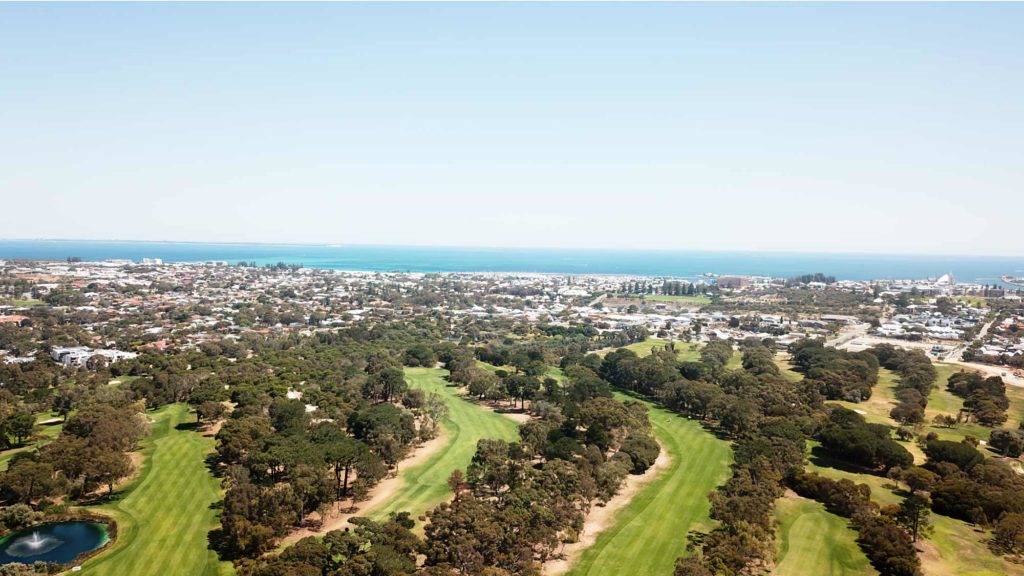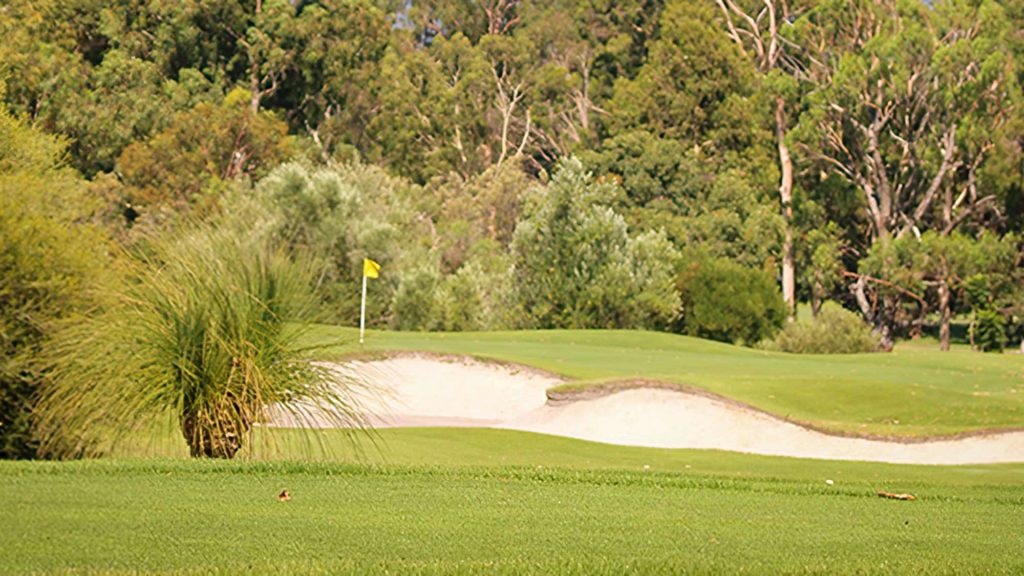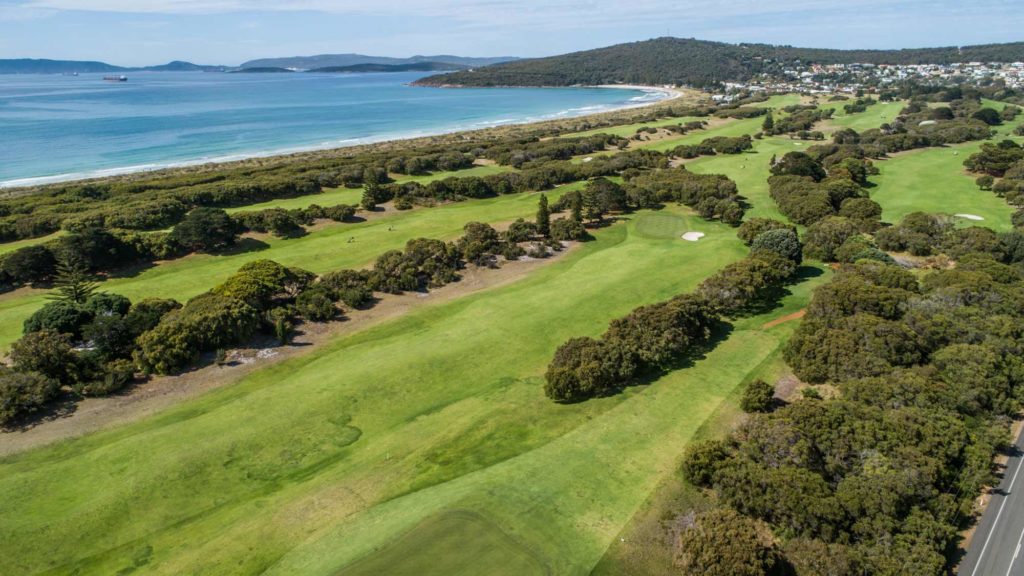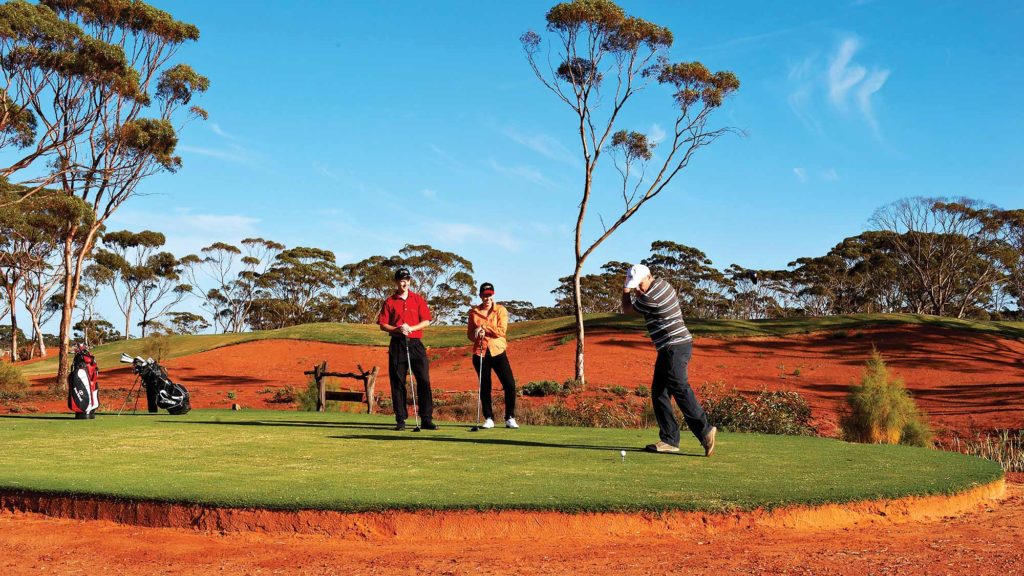Even its unheralded courses suggest it may be so.
Western Australia must feel like a fortress to the rest of the country. Our largest state has enforced some of the strictest lockdown rules seen during COVID-19 and WA Premier Mark McGowan has made no apologies for protecting his nearly three million constituents.
Exactly when other Australians will be allowed back in remains a fickle notion in uncertain times, but chances are golfers will be among the first citizens flying west once borders re-open to all. Sure, it’s mid-spring now and the temperate shoulder seasons are always popular among golfers, plus travelling to WA can feel like being in another country when you consider you’ve probably flown for longer than it takes to reach New Zealand, New Caledonia or Fiji and are two or three hours behind your usual time zone. However, WA offers more than just a great climate and a semi-exotic location. Golfers know it’s simply about the quality of the golf on offer.

Our most recent ranking of Australia’s Top 100 Courses in March 2020 reconfirmed that the west more than holds its own when it comes to assessments of the best courses in the land. WA has 10 percent of Australia’s population and is home to 12 of our Top 100 Courses, which on the surface is proportionate. Yet it’s when you dig a little deeper and hunt down the courses you probably haven’t heard much about that the extent of the state’s golf riches is revealed in full.
It’s why Perth is a contender for the best city per capita for golf in Australia and why, by extension, the whole state holds such an allure for golfers. It’s no jest – the best in the west can match it with the best anywhere, yet the rest are not far behind the best. Once planes start landing at Perth Airport again and when Border Village permits drivers journeying gallantly across the Nullarbor to pass once more, there’s sure to be a heavy supply of golfers itching to venture west – and the courses they’ll be seeking to play are many and varied.

The Doctor is in
According to our WA-based panellists for the biennial Top 100 Courses ranking, the state boasts several distinct attributes when it comes to experiencing great golf. Most Australians know Perth and the southern parts of WA are blessed with tremendous year-round weather. Possibly less appreciated, though, is the sand-based substrate most courses are built on and how it helps provide outstanding and consistent playing surfaces. Such a large state also lends itself to a wide variety of courses, settings and physical characteristics. Where else might you find a links layout like Albany, a desert gem like Kalgoorlie, a coastal titan like The Cut, a fun nine-holer on an island like at Rottnest, top-quality resort layouts like Joondalup and member courses like Lake Karrinyup in one jurisdiction?
It’s not just our course aficionados, either. Gold Coast-based course architect Richard Chamberlain, who has redesigned two greens at Royal Fremantle Golf Club as part of a broader masterplan he submitted to the club, recognises attributes in WA golf that the rest of the country simply doesn’t own.
“It’s all on sand,” he says. “The entire coast, at least around Perth and all the way down to Busselton and places like that, it’s all sand. It’s all firm and fast. The other thing that always surprises me about Perth is they’re all on bent greens and they really seem to be ultra-competitive about how fast they can get them and it’s not uncommon for some of them to hit 13s and 14s [on the Stimpmeter].
“The grass species and the firmness and the [lack of] water are probably the biggest differences they’ve got in the west. And throw in the Fremantle Doctor, which comes in every afternoon. I’ve got to factor in that Doctor from the south-west. Every now and again I’ll stop myself and I’ll go, ‘Hang on, I’m in Perth – what’s the wind going to do? That pin’s going to be unplayable in the afternoon.’ That’s something unique to Perth, that Doctor.”
At Royal Fremantle, Chamberlain’s new second and fifth greens are just an entrée in unlocking the latent potential in an excellent site. The club that helped nurture the games of Minjee and Min Woo Lee, among other tour stars in the generations before the powerhouse siblings, is blessed with several natural advantages, including an ideal degree of contouring. There’s ample movement for interesting golf holes but the undulations are not steep enough to make walking cumbersome.

“It probably needs to be said: they’re an untapped potential,” Chamberlain says. “They’ve got a site that you could easily get a top-40 course in the country from. You look around the site and there is room, too. They’re not crammed in, it’s a nice piece of land, there’s nice movement and a little bit of water.”
Royal Fremantle is a members’ club but one that hosts the occasional invitational day. Its testing layout and honour roll of champion members are drawing newcomers – juniors in particular, thanks to the Lees. General manager Gavin Burt makes a point of asking junior members who their favourite golfer is and says nine out of 10 kids answer either Minjee or Min Woo, who Burt describes as wonderful ambassadors for the club
Also wonderful is the examination the course provides. Average players will encounter a fair test that won’t beat them up, while better golfers face decisions throughout the 18 holes. “There are choices all over the course,” Burt says. “It’s risk-and-reward but more about making choices and playing smart.”
Ten of the 18 greens have been converted to Pure Distinction bentgrass, while Chamberlain’s masterplan is expected to be completed by 2024. Meanwhile, in December the club will also host the WA Open (December 2-5) just as it did last year and in 2011, 2015 and numerous times last century. Tellingly, in the previous three editions, 11-under par was the best tally any golfer could muster at Royal Freo.
Like most cities of a certain size, there’s a tier of very-good-but-not-great courses scattered across Perth. Hartfield Country Club, which will stage the Australian Mid-Amateur Championship in 2022, and Gosnells, Wanneroo and Kwinana golf clubs regularly host state events and pennant finals yet don’t receive a commensurate level of attention nationally. It’s a shame, because travelling golfers would enjoy each one.
In saying that, parts of the course at Gosnells Golf Club would not look out of place on the Melbourne Sandbelt. A combination of the sandy terrain, bunkering style, green shapes and neighbouring treelines that play a supporting role rather than stealing the spotlight give it a genuine Sandbelt vibe in places. Yet overall the bushland setting is quintessentially West Australian. Playing from the correct angle into the putting surfaces is frequently crucial across the course, while holes like the par-4 16th call upon slopes and swales to guard the green in lieu of sand. One more key quality is the need to not only find the green but the correction portion of it, as it is not uncommon for a seemingly well-targeted iron shot to yield a horror show of a two-putt.

Get out of town
More top-shelf golf can be found south of Perth in the Peel region, which is one of the booming regions of Australia for population growth. Although a fixture in our Top 100 ranking soon after it opened in 1987, Meadow Springs Golf & Country Club is another lacking in accolades despite being a standout layout. In a hotbed area for golf where courses like The Cut and Links Kennedy Bay – which are framed by the Indian Ocean – tend to dominate discussion, Meadow Springs still lures golfers without the postcard backdrop. Big greens and big bunkers dominate golfers’ eyes and minds along with cascading undulations on fairways and greens to challenge high shots and ground-huggers alike. The opening nine, called Meadow, is flatter but with narrower playing corridors, more water and more prevalent bunkering. The inward half, Tuart, uses the centuries-old eponymous trees to define the path towards the green.
Fitting into a similar category – Top 100 in calibre yet undiscovered by many – is the magnificent Kalgoorlie Golf Course. Granted, if it is still undiscovered by many, that’s surely down to its remote location. Kalgoorlie is 600 kilometres east of Perth and half a world away from anywhere, yet has an out-of-this-world golf course designed by Kalgoorlie-born Graham Marsh. To say the layout is worth the trip is an understatement. Let’s not forget, too, that the PGA Tour of Australasia has travelled to the iconic mining town for the WA PGA Championship every year since 2012. How thrilling a tournament venue is it? Consider that no winner at Kalgoorlie has managed a victory margin greater than two shots. WA’s Jarryd Felton will be back to defend his title from November 25-28.
Few places reinforce the notion of the destination making the journey worthwhile like this country, and perhaps WA even more so. Taking that notion one step further is Albany Golf Club, a long-time Top 100 denizen pushed out in the past 10 to 15 years simply because of the influx of flashy new courses to emerge. Its qualities have not diminished, though. The Southern Ocean town of Albany is a five-hour drive south-east of Perth but upon arrival at the course it feels like you’ve found the coast of Britain. The linksy layout occupies a strip of land on the edge of King George Sound and its firm, fast fairways and oceanside locale make for a charming if occasionally capricious combination. No wonder Craig Parry has long touted it as a favourite course of his.
Albany is a place that, prior to COVID, developed something of a cult following and odds are it will again. Golfers from across Australia and around the world would make pilgrimages to the course, recognising the combination of a remote location and an excellent links.
“It’s so unique to anything else in not just WA but in Australia. There’s nothing else like it,” says general manager Dan Northcott. “Well-travelled golfers understand what we’ve got here.”

There’s a strong Scottish heritage to the Albany region, which, along with the location and climate, perhaps explains why the town received the type of course it did. Yet it is English-born but Australian-raised surveyor William Henry Angove who is credited with the original design. A lake just east of the town bears Angove’s name – part of a popular network of bushwalking trails and walks that are also a drawcard of the region.
A few greens and tees have been moved over time at Albany, however most of the course has been left untouched, especially the natural undulations that rarely yield a level lie. Among the features are the ridged fairways and raised greens – classic examples of the land’s relief defending targets, with a minimal need for bunkers (there are just 17 in total).
In the past two to three years, the club has placed a heightened emphasis on the condition of the course, which, given its sand base and temperate climate, is perfectly playable at any time of year. This past winter brought record rainfall to Albany yet the course has held up well, Northcott says. One popular window on the calendar to visit is whale migration season from late May to early October. During that time, it’s not uncommon to spot whales off the coast while playing the stunning par-4 12th, called “Sea View”, the course’s best-known hole. The short 14th also commands attention (and respect), but in truth there are 18 reasons to visit. “Every hole is quite different – there’s nothing repetitive,” Northcott says.
It’s a statement that rings true for golf across the entire state.
Featured photo by Gary Lisbon



